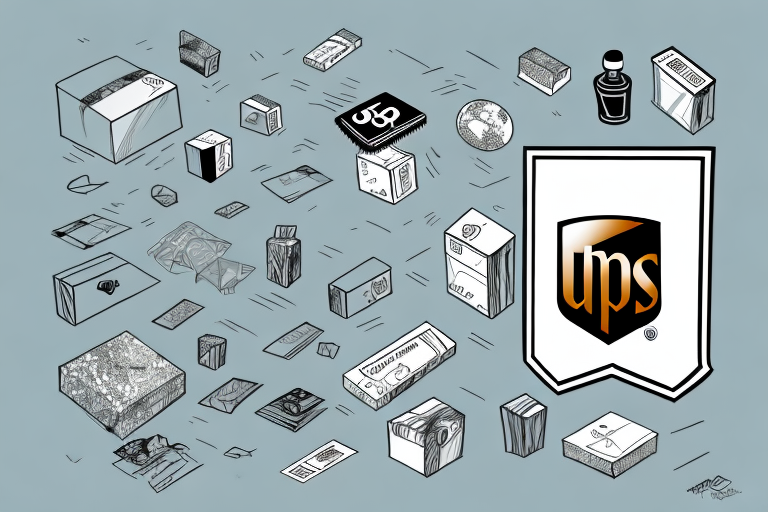Importance of Proper Packaging in Shipping
Shipping packages can be a nerve-wracking experience for both individuals and businesses. Ensuring your package reaches its destination in perfect condition is paramount. Understanding UPS packaging guidelines is essential to guarantee your package arrives safely and securely. This article explores the top tips and best practices for packaging and shipping your items using UPS delivery services.
Protecting Your Items
Packaging plays a significant role in the safe transportation of your packages. Selecting the right box, cushioning materials, and sealing tape is crucial to protect your items from damage. Improper packaging can lead to costly damage, delays, and even lost shipments. Following UPS's packaging guidelines ensures your package arrives intact.
Enhancing Customer Experience
Proper packaging affects the overall customer experience. A damaged package can lead to frustration and disappointment, resulting in negative reviews and loss of trust in your brand. Conversely, a package that arrives in good condition enhances your company's reputation and encourages repeat business.
Reducing Shipping Costs
Proper packaging can help reduce shipping costs. Incorrectly packed packages may take up more space than necessary, leading to higher shipping fees. Using appropriately sized boxes and cushioning materials minimizes the size and weight of your package, potentially saving you money on shipping fees.
Common Mistakes to Avoid When Shipping Packages
Avoiding common packaging mistakes can significantly reduce the likelihood of damage or lost packages. Here are some pitfalls to watch out for:
- Using inadequate packaging materials
- Using used boxes
- Overpacking or underpacking
- Not securing the package properly
- Incorrect labeling
Understanding Shipping Regulations
Each country has its own set of rules and regulations regarding what can and cannot be shipped. Failure to comply with these regulations can result in packages being held at customs or returned to the sender. Research and understand the shipping regulations for the destination country before sending any packages. Refer to resources like the U.S. Customs and Border Protection for detailed information.
Choosing the Right Shipping Box
The first step in proper packaging is selecting the right box. Not all boxes are created equal, and it's crucial to choose one that matches your item's size and weight.
Selecting Durable Materials
Choose a durable box that won't tear or puncture easily. Corrugated cardboard is the most common material used for shipping boxes as it provides excellent protection and is lightweight. For fragile or valuable items, consider using a wooden crate or metal container for added protection.
Ensuring the Correct Size
Select a box that's the right size for your item. A box that's too small can cause damage, while a box that's too large can result in your item shifting during transportation. Measure your item carefully and choose a box that offers enough room for padding and cushioning materials.
Proper Cushioning Materials for Safe Shipping
Using the right cushioning materials is essential to protect your items during shipping. Materials like bubble wrap, packing peanuts, and foam inserts help absorb shocks and prevent movement within the package.
Choosing the Right Cushioning
Consider the fragility of the item being shipped. Delicate items like glassware or electronics may require more cushioning than sturdier items like books or clothing. Additionally, the shipping method can impact the amount and type of cushioning needed. For instance, air travel may require more durable and shock-absorbing materials compared to ground transportation.
Eco-Friendly Options
Consider the environmental impact of the cushioning materials used. Eco-friendly alternatives like biodegradable packing peanuts or recycled paper products are better for the environment and can appeal to environmentally-conscious customers. Resources such as the Environmental Protection Agency offer guidelines on sustainable packaging practices.
Securing and Labeling Your Package Correctly
Proper sealing and labeling are critical to ensure your package is handled correctly during transit.
Sealing Your Package
Use appropriate sealing tape, such as pressure-sensitive or reinforced tape. Seal all openings with at least three strips of tape, applying it across the opening and down the sides. Avoid using duct tape or masking tape as they do not provide the necessary strength and security.
Accurate Labeling
Include the recipient's name, address, and phone number, as well as your return address. This ensures the package is delivered to the correct location and can be returned if necessary. Use a waterproof marker or label to prevent smudging or fading during transit. Additionally, add labels like "Fragile" or "Handle with Care" if your package contains delicate items.
Understanding UPS Packaging Guidelines
UPS provides detailed guidelines to minimize the risk of damage during transportation. Adhering to these guidelines can improve the safety and efficiency of your shipments.
Box Requirements
UPS recommends using a cardboard outer box as it is durable and less susceptible to damage. Ensure the box can withstand the rigors of transportation without tearing or collapsing.
Cushioning Standards
UPS advises that cushioning materials should be sufficient to withstand two inches of drop or impact testing without increasing the shock transmitted to the item. This standard helps protect items from unexpected drops during handling.
Weight and Size Limits
Packages should not exceed UPS's weight and size limits to avoid additional fees and ensure smooth handling. Always check the latest UPS guidelines on their official website before shipping.
Shipping Fragile or Delicate Items Safely
Shipping fragile or delicate items requires extra precautions to prevent damage.
Enhanced Cushioning
Use appropriate cushioning materials such as bubble wrap, packing paper, or foam to protect fragile items. A double-walled box provides added protection, and ensuring sufficient cushioning on all sides prevents shifting during transport.
Special Handling Labels
Label the package as "Fragile" or "Handle with Care" to alert the shipping carrier to take extra precautions. Consider using a shipping service that specializes in fragile items for additional expertise and resources.
Documentation and Insurance
Take photos of the item before packing it to document its condition, which can be useful for insurance claims if damage occurs during shipping. Additionally, purchasing shipping insurance provides financial protection against loss or damage.
Preparing Your Package for International Shipping
International shipping involves additional steps to comply with customs regulations and ensure successful delivery.
Customs Documentation
Include a detailed invoice listing all items and their values. Ensure the recipient's address is in the correct international format, including postal codes. Avoid shipping restricted or prohibited items by consulting the U.S. Customs and Border Protection guidelines.
Proper Packaging
Use sturdy boxes and adequate packing materials like bubble wrap or packing peanuts to protect your items during transit. Label the package as "Fragile" if necessary, and consider purchasing shipping insurance for added security.
Tracking Your Shipment: What You Need to Know
Once your package is shipped, tracking its progress provides peace of mind and allows you to monitor its journey.
Using UPS Tracking Services
UPS offers a reliable tracking service that allows you to monitor your package in real-time. Regularly checking the shipment status online helps you stay informed about any potential issues or delays.
Proactive Monitoring
By staying updated on your package's status, you can address any problems promptly. This proactive approach ensures timely resolutions and enhances your overall shipping experience.
Handling Lost or Damaged Shipments
In the rare event that your shipment gets lost or damaged, taking prompt action is crucial.
Filing a Claim
Contact UPS customer service immediately to file a claim and initiate an investigation. Provide proof of the shipment's value, such as receipts or invoices, to expedite the process.
Preventative Measures
To minimize the chances of loss or damage, always follow proper packaging guidelines, use tracking services, and consider purchasing insurance for valuable or fragile items.
Conclusion
Following UPS's packaging guidelines and best practices ensures that your package arrives safely and securely. By selecting the right box, cushioning materials, and sealing tape, you minimize the risk of damage during transport. Accurate labeling and tracking provide peace of mind, and prompt action in case of issues ensures quick resolution. Implementing these strategies enhances the reliability of your shipping process and fosters trust with your customers.




















